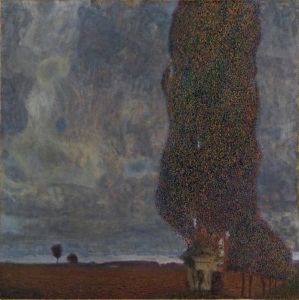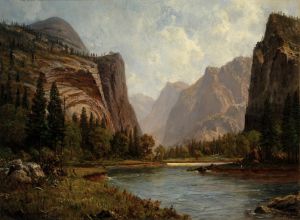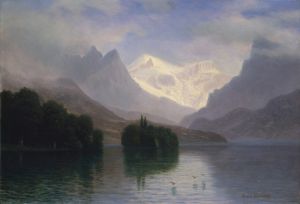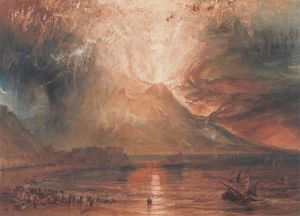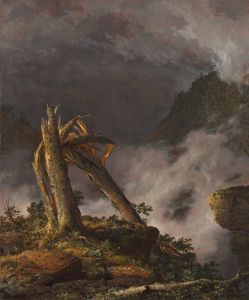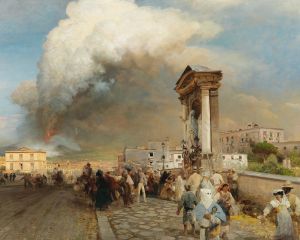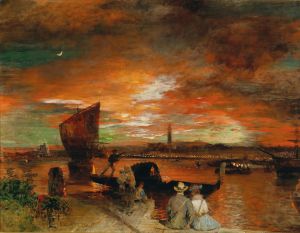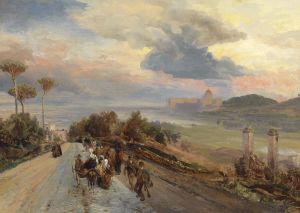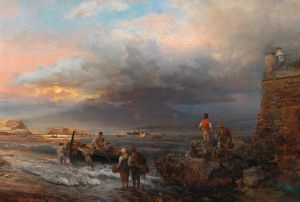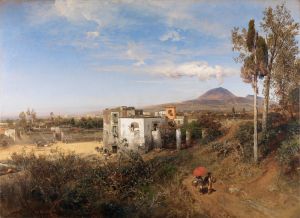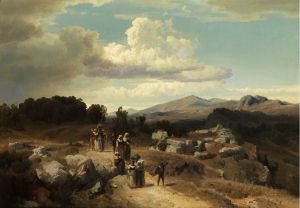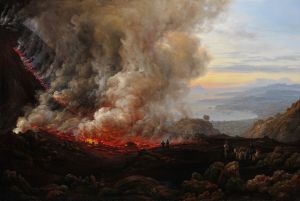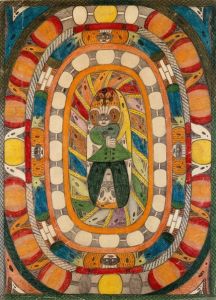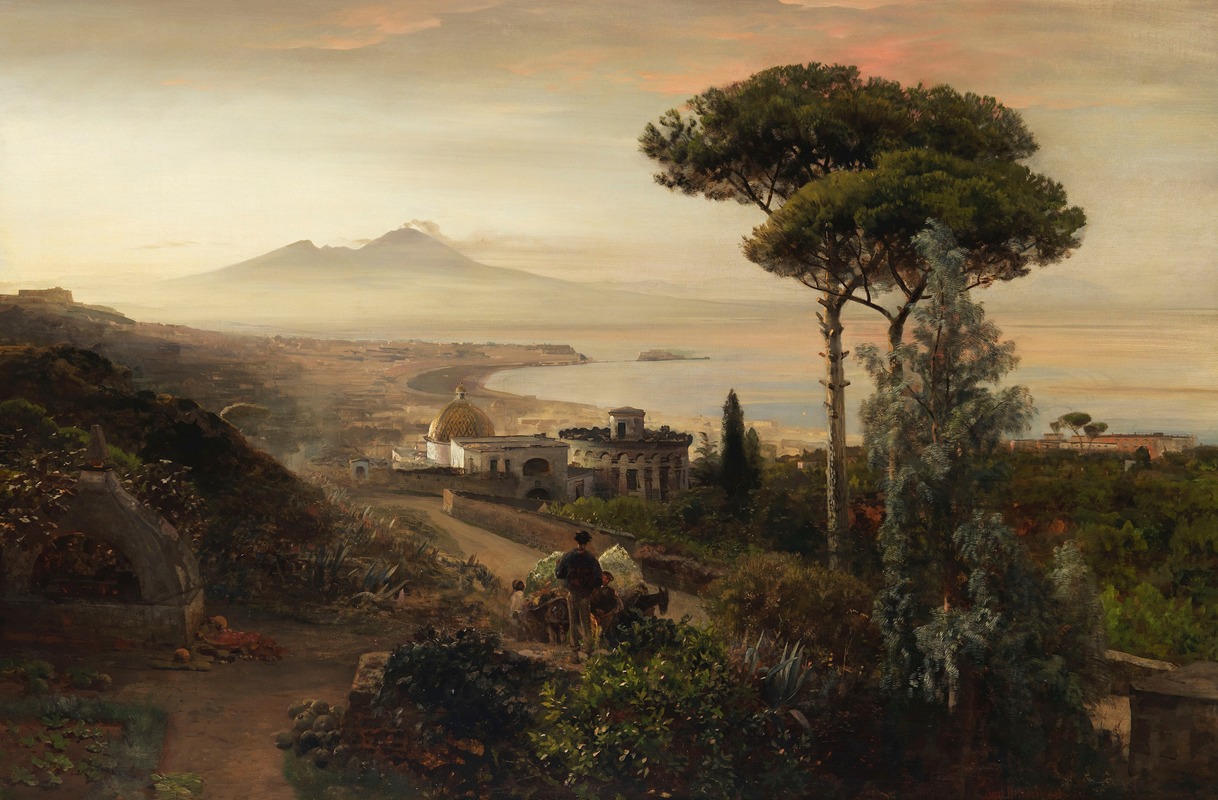
Blick auf den Vesuv
A hand-painted replica of Oswald Achenbach’s masterpiece Blick auf den Vesuv, meticulously crafted by professional artists to capture the true essence of the original. Each piece is created with museum-quality canvas and rare mineral pigments, carefully painted by experienced artists with delicate brushstrokes and rich, layered colors to perfectly recreate the texture of the original artwork. Unlike machine-printed reproductions, this hand-painted version brings the painting to life, infused with the artist’s emotions and skill in every stroke. Whether for personal collection or home decoration, it instantly elevates the artistic atmosphere of any space.
Oswald Achenbach's painting Blick auf den Vesuv (translated as View of Mount Vesuvius) is a notable work by the German landscape painter, who was one of the most prominent artists of the Düsseldorf School of painting in the 19th century. Achenbach, born in 1827 in Düsseldorf, was celebrated for his dramatic and atmospheric depictions of landscapes, often infused with a sense of grandeur and romanticism. His works frequently featured Italian scenery, reflecting his deep fascination with the Mediterranean region, which he visited multiple times during his career.
Blick auf den Vesuv captures a view of Mount Vesuvius, the iconic volcano near Naples, Italy. The painting exemplifies Achenbach's mastery in portraying the interplay of light, shadow, and color to evoke a vivid sense of place. The composition likely includes elements typical of his style, such as a dramatic sky, detailed vegetation, and figures or structures that provide a sense of scale and human presence within the natural environment. Achenbach's ability to balance realism with a romanticized vision of nature is evident in many of his works, and this painting is no exception.
Mount Vesuvius, a subject of fascination for artists and travelers alike, was a popular motif in 19th-century European art. Its historical significance, as the volcano responsible for the destruction of Pompeii and Herculaneum in 79 AD, combined with its imposing physical presence, made it an enduring symbol of nature's power. Achenbach's depiction of Vesuvius aligns with the broader Romantic movement's interest in sublime landscapes that inspire awe and contemplation.
While specific details about the creation date or current location of Blick auf den Vesuv are not readily available, it is consistent with Achenbach's broader body of work, which often focused on Italian landscapes. His paintings were widely exhibited and admired during his lifetime, earning him recognition as one of the leading landscape painters of his era.
Oswald Achenbach passed away in 1905, but his legacy endures through his contributions to landscape painting. His works, including Blick auf den Vesuv, continue to be appreciated for their technical skill and ability to convey the beauty and drama of the natural world.





